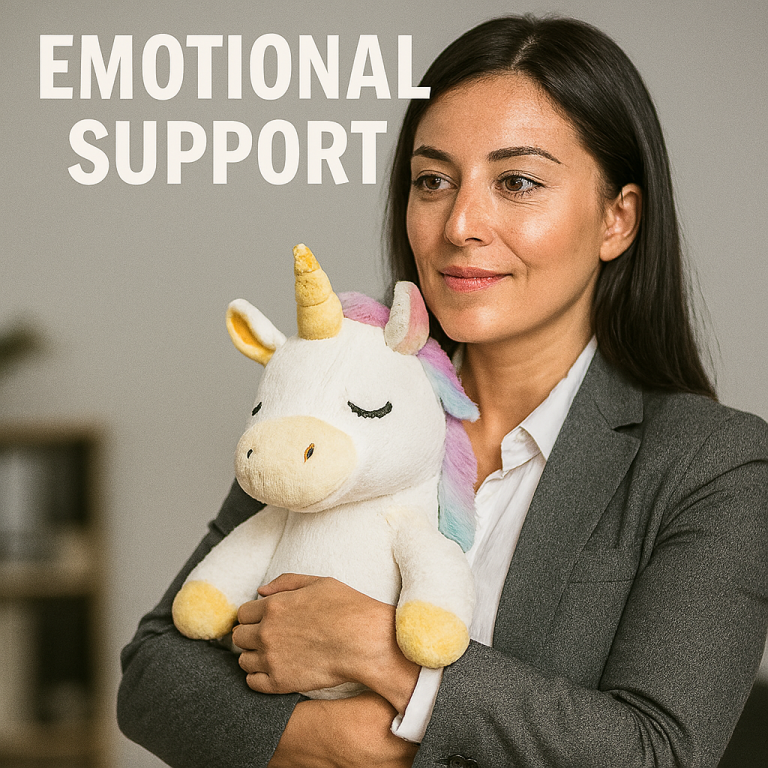
Interesting Confusing Psychology Of Confusion And Human Understanding
Psychology Of Confusion And Human Understanding – Exploring The Depths Of Confusion
Confusion is a universal psychological state that arises when individuals encounter conflicting information, unclear signals, or overwhelming complexity, and it plays a critical role in shaping human cognition, decision-making, and emotional regulation. Researchers in cognitive psychology emphasize that confusion is not merely a negative experience but rather a transitional state that can lead to deeper learning, adaptation, and problem-solving when properly managed. The phenomenon of confusion often emerges in educational settings, social interactions, and professional environments, where individuals must reconcile contradictions or incomplete knowledge. Understanding confusion requires examining its neurological basis, behavioral manifestations, and cultural interpretations, all of which reveal its multidimensional nature. Confusion can be triggered by ambiguity in language, contradictory evidence, or excessive cognitive load, and each of these triggers provides insight into how the human brain processes uncertainty. While confusion can cause frustration and hesitation, it also creates opportunities for reflection, reevaluation, and intellectual growth. The psychology of confusion therefore represents a balance between disorientation and discovery, highlighting the importance of resilience and adaptability.

Cognitive Roots Of Confusion – Neural Pathways And Processing
Confusion originates in the brain’s prefrontal cortex, which is responsible for executive functions such as reasoning, planning, and decision-making, and it becomes pronounced when competing signals disrupt clarity. Neuroscientific studies reveal that confusion is closely linked to working memory limitations, as individuals struggle to hold and integrate multiple pieces of information simultaneously. The hippocampus also plays a role, as it attempts to reconcile new data with stored memories, often leading to mismatches that produce uncertainty. Confusion is heightened when dopamine regulation fluctuates, since reward prediction errors can distort expectations and create cognitive dissonance. This neurological interplay demonstrates that confusion is not random but rather a structured response to conflicting stimuli. The brain’s adaptive mechanisms attempt to resolve confusion by seeking patterns, testing hypotheses, and discarding irrelevant data. However, when resolution fails, confusion persists and may escalate into anxiety or indecision. Understanding these neural pathways provides a foundation for appreciating how confusion shapes human thought. The following table illustrates the neurological components involved in confusion.
| Brain Region | Function | Role In Confusion |
|---|---|---|
| Prefrontal Cortex | Executive control | Struggles with conflicting signals |
| Hippocampus | Memory integration | Produces mismatches with new data |
| Amygdala | Emotional regulation | Heightens anxiety during confusion |
| Dopamine System | Reward prediction | Distorts expectations and clarity |
| Parietal Cortex | Sensory integration | Overloads processing with excess input |
Emotional Dimensions Of Confusion – Feelings And Reactions
Confusion is not only cognitive but also deeply emotional, as individuals often experience frustration, anxiety, or even curiosity when clarity is lost. Emotional psychology highlights that confusion can trigger stress responses, particularly when individuals perceive uncertainty as threatening. At the same time, confusion can spark curiosity, motivating individuals to seek answers and resolve contradictions. The emotional impact of confusion varies depending on personality traits, resilience levels, and prior experiences with uncertainty. For example, individuals with high tolerance for ambiguity may interpret confusion as a challenge rather than a threat. Emotional regulation strategies such as mindfulness, reframing, and self-reflection can mitigate the negative effects of confusion. Social contexts also influence emotional responses, as group discussions may either amplify confusion through conflicting opinions or reduce it through collaborative problem-solving. The dual nature of confusion as both distressing and motivating makes it a unique psychological state. Below are key points summarizing emotional dimensions of confusion.
- Confusion often triggers frustration and stress when clarity is absent.
- Curiosity can emerge as a positive response to confusion.
- Personality traits influence tolerance for ambiguity.
- Emotional regulation strategies reduce negative impacts.
- Social contexts can amplify or resolve confusion.
- Anxiety is heightened when confusion persists without resolution.
- Resilience determines whether confusion leads to growth.
- Confusion can motivate deeper exploration of ideas.
- Emotional responses vary across cultural interpretations.
- Confusion is both distressing and transformative.
Confusion In Learning – Educational Implications And Growth
Educational psychology identifies confusion as a critical component of the learning process, since it signals moments when students confront gaps in understanding. Teachers often observe that confusion precedes breakthroughs, as learners struggle to reconcile new concepts with prior knowledge. Structured confusion, when guided by effective instruction, can enhance retention and comprehension. However, unmanaged confusion may lead to disengagement, frustration, or misconceptions. Research shows that students benefit from scaffolding techniques that provide clarity while still allowing space for exploration. Confusion also plays a role in problem-based learning, where ambiguity encourages critical thinking and collaboration. The balance between challenge and support determines whether confusion becomes productive or destructive. Educators must therefore design environments that normalize confusion as part of intellectual growth. The following table outlines educational strategies related to confusion.
| Educational Strategy | Role Of Confusion | Outcome |
|---|---|---|
| Scaffolding | Provides partial clarity | Enhances comprehension |
| Problem-Based Learning | Encourages ambiguity | Develops critical thinking |
| Peer Collaboration | Shares perspectives | Reduces misconceptions |
| Reflection Exercises | Promotes self-awareness | Strengthens retention |
| Adaptive Feedback | Resolves uncertainty | Improves confidence |
Confusion In Decision-Making – Choices And Consequences
Decision-making psychology emphasizes that confusion often arises when individuals face complex choices with competing outcomes. Confusion can delay decisions, as individuals hesitate to commit without clarity. At the same time, confusion can encourage deeper analysis, leading to more informed choices. Behavioral economics highlights that confusion is amplified when information is excessive or contradictory, creating decision paralysis. Risk perception also influences confusion, since uncertainty about consequences heightens hesitation. Social influences such as peer pressure or expert advice can either resolve or intensify confusion. Decision-making models suggest that confusion is a natural stage in evaluating alternatives. Effective strategies for managing confusion include simplifying options, clarifying goals, and prioritizing values. Below are key points summarizing confusion in decision-making.
- Confusion delays decision-making when clarity is absent.
- Excessive information amplifies confusion.
- Contradictory evidence creates decision paralysis.
- Risk perception heightens hesitation.
- Social influences can resolve or intensify confusion.
- Confusion encourages deeper analysis of choices.
- Simplifying options reduces confusion.
- Clarifying goals improves decision confidence.
- Prioritizing values helps resolve uncertainty.
- Confusion is a natural stage in evaluating alternatives.
Confusion In Communication And Language – Ambiguity And Misinterpretation
Confusion frequently arises in communication when language is ambiguous, symbols are unclear, or cultural differences distort meaning. Linguistic psychology emphasizes that words often carry multiple interpretations, and without context, individuals may struggle to identify the intended meaning. Miscommunication is amplified when tone, body language, or digital cues are inconsistent with verbal content. Cross-cultural communication further complicates matters, as idioms, metaphors, and symbolic references may not translate effectively. Confusion in communication can lead to conflict, hesitation, or misaligned expectations, particularly in professional or interpersonal settings. Effective communication strategies such as active listening, paraphrasing, and contextual framing reduce confusion significantly. The role of technology adds another layer, since digital platforms often strip away nonverbal cues, increasing the likelihood of misinterpretation. Confusion in communication therefore reflects the delicate balance between clarity and ambiguity inherent in human interaction. The following table outlines key sources of confusion in communication.
| Source Of Confusion | Example | Impact |
|---|---|---|
| Ambiguous Words | “Bank” meaning riverbank or financial institution | Misinterpretation of intent |
| Tone Mismatch | Sarcasm in text messages | Emotional misunderstanding |
| Cultural Idioms | “Kick the bucket” in translation | Loss of meaning |
| Symbolic References | Colors with cultural significance | Misaligned expectations |
| Digital Platforms | Lack of body language | Increased ambiguity |
Confusion In Social Dynamics – Group Influence And Collective Uncertainty
Social psychology identifies confusion as a common phenomenon in group settings, where individuals encounter conflicting opinions, unclear leadership, or collective indecision. Group dynamics often amplify confusion, as social influence can distort perceptions and create pressure to conform. Confusion in social contexts may lead to hesitation, silence, or reliance on authority figures for clarity. At the same time, group confusion can foster collaboration, as individuals work together to resolve uncertainty. Social identity theory suggests that confusion is heightened when group norms are unclear or contradictory. Leadership plays a critical role in managing confusion, since effective leaders provide structure and direction while encouraging dialogue. Confusion in social dynamics also reflects cultural expectations, as collectivist societies may prioritize harmony over clarity, while individualist societies emphasize personal interpretation. The balance between conformity and independence determines how confusion unfolds in group settings. Below are key points summarizing confusion in social dynamics.
- Confusion arises when group norms are unclear.
- Conflicting opinions amplify collective uncertainty.
- Leadership provides structure to reduce confusion.
- Social influence can distort perceptions.
- Conformity pressures increase hesitation.
- Collaboration can resolve group confusion.
- Cultural expectations shape responses to confusion.
- Silence often reflects collective uncertainty.
- Authority figures are relied upon for clarity.
- Group confusion can lead to innovation.

Confusion In Memory And Recall – Distortions And Reconstruction
Memory psychology demonstrates that confusion often emerges when individuals attempt to recall information that is incomplete, distorted, or reconstructed inaccurately. Human memory is not a perfect recording device but rather a reconstructive process that integrates fragments of past experiences. Confusion arises when these fragments conflict or fail to align with present stimuli. False memories, misinformation, and suggestibility all contribute to confusion in recall. Cognitive load further complicates memory, as individuals may confuse details when overwhelmed by excessive information. Confusion in memory is particularly evident in eyewitness testimony, where individuals often misinterpret or misremember events. Neurological studies reveal that the hippocampus and prefrontal cortex play central roles in reconstructing memory, and mismatches between them heighten confusion. Emotional states also influence recall, as stress or anxiety can distort memory accuracy. Understanding confusion in memory highlights the fragile nature of human recollection. The following table outlines factors contributing to confusion in memory.
| Factor | Description | Impact On Recall |
|---|---|---|
| False Memories | Inaccurate reconstruction | Leads to misinterpretation |
| Misinformation | External distortion | Creates conflicting recall |
| Suggestibility | Influence from others | Alters memory accuracy |
| Cognitive Load | Excessive information | Confuses details |
| Emotional Stress | Anxiety or trauma | Distorts recollection |
Confusion In Problem-Solving – Barriers And Breakthroughs
Problem-solving psychology emphasizes that confusion is a natural stage in tackling complex challenges, as individuals confront uncertainty and conflicting pathways. Confusion often arises when solutions are unclear, resources are limited, or goals are ambiguous. While confusion can delay progress, it also encourages deeper analysis and creative exploration. Cognitive scientists argue that confusion is essential for innovation, since breakthroughs often occur after periods of disorientation. Structured problem-solving frameworks help manage confusion by providing step-by-step approaches to clarity. Confusion in problem-solving is also influenced by emotional resilience, as frustration can either hinder or motivate persistence. Collaborative problem-solving reduces confusion by pooling diverse perspectives and strategies. Confusion therefore represents both a barrier and a catalyst in problem-solving processes. Below are key points summarizing confusion in problem-solving.
- Confusion arises when solutions are unclear.
- Ambiguous goals amplify uncertainty.
- Limited resources increase confusion.
- Confusion encourages deeper analysis.
- Breakthroughs often follow disorientation.
- Structured frameworks reduce confusion.
- Emotional resilience influences persistence.
- Collaboration pools diverse strategies.
- Confusion is both barrier and catalyst.
- Innovation emerges from managed confusion.
Confusion In Perception – Sensory Overload And Interpretation
Confusion often emerges when sensory input overwhelms the brain’s ability to process and interpret information accurately. Perceptual psychology explains that humans rely on sensory integration to construct coherent experiences, but when signals conflict, confusion arises. Visual illusions, auditory distortions, and tactile inconsistencies all demonstrate how perception can mislead cognition. Sensory overload, such as excessive noise or visual clutter, amplifies confusion by overwhelming working memory. Confusion in perception is also influenced by attention, since selective focus may distort or exclude critical details. Neurological studies show that the parietal cortex plays a central role in integrating sensory data, and mismatches between modalities heighten uncertainty. Cultural factors shape perception as well, since individuals interpret sensory cues differently depending on learned associations. Confusion in perception therefore reflects both biological limitations and contextual influences. The following table outlines sources of perceptual confusion.
| Source Of Confusion | Example | Impact |
|---|---|---|
| Visual Illusions | Optical illusions | Misinterpretation of reality |
| Auditory Distortions | Echoes or overlapping sounds | Difficulty in comprehension |
| Tactile Inconsistencies | Conflicting textures | Sensory mismatch |
| Sensory Overload | Excessive noise or clutter | Cognitive fatigue |
| Cultural Interpretation | Symbolic meanings | Divergent perceptions |
Confusion In Technology – Digital Complexity And User Experience
Technology introduces new dimensions of confusion, as digital systems often overwhelm users with complexity, rapid updates, and unclear interfaces. Human-computer interaction research highlights that confusion arises when users cannot predict system behavior or interpret feedback correctly. Confusion in technology is amplified by inconsistent design, hidden functions, and excessive options. Digital platforms also introduce confusion through information overload, as users struggle to filter relevant data from vast streams. Cybersecurity concerns add another layer, since unclear warnings or technical jargon can confuse users about risks. Confusion in technology reflects both design flaws and the inherent complexity of digital systems. However, confusion can also motivate innovation, as developers refine interfaces to improve clarity. User-centered design principles emphasize simplicity, transparency, and consistency as antidotes to technological confusion. Below are key points summarizing confusion in technology.
- Confusion arises from unclear interfaces.
- Excessive options overwhelm users.
- Inconsistent design amplifies uncertainty.
- Information overload complicates digital navigation.
- Cybersecurity warnings often confuse users.
- Hidden functions create unpredictability.
- Confusion motivates interface innovation.
- User-centered design reduces confusion.
- Transparency improves digital confidence.
- Simplicity is the antidote to technological confusion.
Confusion In Culture – Symbolism And Interpretation
Cultural psychology emphasizes that confusion often arises when individuals encounter unfamiliar traditions, symbols, or social norms. Cultural differences in language, rituals, and values can create uncertainty in interpretation. Confusion is particularly evident in cross-cultural interactions, where symbolic meanings may diverge dramatically. For example, colors, gestures, or metaphors often carry distinct meanings across societies, leading to misinterpretation. Confusion in culture reflects the complexity of human diversity and the challenge of universal understanding. At the same time, cultural confusion can foster curiosity and empathy, as individuals seek to understand perspectives beyond their own. Anthropological studies highlight that confusion is a natural stage in cultural adaptation, particularly for migrants or travelers. Confusion in culture therefore represents both a barrier and a bridge to intercultural communication. The following table outlines cultural sources of confusion.
| Cultural Element | Example | Impact |
|---|---|---|
| Language | Idioms and metaphors | Misinterpretation |
| Rituals | Unfamiliar ceremonies | Uncertainty in participation |
| Symbols | Colors or gestures | Divergent meanings |
| Values | Individualism vs collectivism | Conflicting expectations |
| Traditions | Holiday practices | Cultural disorientation |
Confusion In Identity – Self And Social Roles
Identity psychology reveals that confusion often arises when individuals struggle to reconcile personal values with social expectations. Identity confusion is particularly common during adolescence, when individuals explore roles, beliefs, and affiliations. Social pressures, cultural norms, and personal aspirations often conflict, creating uncertainty about self-concept. Confusion in identity can lead to hesitation, experimentation, or even crisis, as individuals attempt to define themselves. At the same time, identity confusion can foster growth, as individuals refine their values and discover authentic paths. Psychological theories such as Erikson’s stages of development highlight identity confusion as a critical stage in maturation. Confusion in identity also reflects broader societal changes, as shifting norms challenge traditional roles. Resilience and reflection are essential for navigating identity confusion successfully. Below are key points summarizing confusion in identity.
- Identity confusion arises during adolescence.
- Conflicting values create uncertainty.
- Social pressures amplify confusion.
- Cultural norms influence self-concept.
- Identity confusion fosters experimentation.
- Crisis may emerge from unresolved confusion.
- Reflection supports authentic growth.
- Erikson highlights identity confusion as critical.
- Shifting norms challenge traditional roles.
- Resilience resolves identity uncertainty.
Confusion In Stress And Anxiety – Psychological Strain And Coping
Confusion often intensifies during periods of stress and anxiety, as heightened emotional states interfere with cognitive clarity. Stress hormones such as cortisol disrupt working memory and executive function, making it harder to process information coherently. Anxiety amplifies confusion by magnifying uncertainty and creating catastrophic interpretations of ambiguous situations. Psychological research shows that individuals under stress are more likely to misinterpret signals, overlook details, and struggle with decision-making. Confusion in stressful contexts can lead to avoidance behaviors, procrastination, or reliance on external guidance. At the same time, confusion can motivate individuals to seek coping strategies, such as mindfulness, relaxation, or structured problem-solving. Stress-related confusion is particularly evident in high-pressure environments like workplaces, examinations, or emergency situations. Resilience plays a critical role, as individuals with strong coping mechanisms can transform confusion into adaptive responses. Confusion in stress therefore reflects both vulnerability and potential growth. Below are key points summarizing confusion in stress and anxiety.
- Stress hormones disrupt cognitive clarity.
- Anxiety magnifies uncertainty and confusion.
- Misinterpretation of signals increases under stress.
- Decision-making suffers during anxious states.
- Avoidance behaviors emerge from confusion.
- Coping strategies reduce stress-related confusion.
- Mindfulness improves clarity under pressure.
- High-pressure environments amplify confusion.
- Resilience transforms confusion into adaptation.
- Stress-related confusion reflects vulnerability and growth.
Confusion In Creativity – Innovation And Ambiguity
Creativity thrives on ambiguity, and confusion often serves as a catalyst for innovative thinking. Creative psychology emphasizes that confusion disrupts conventional patterns, forcing individuals to explore new perspectives. Artists, writers, and inventors frequently describe confusion as a precursor to breakthroughs, since uncertainty encourages experimentation. Confusion in creativity arises when ideas conflict, boundaries blur, or established methods fail. While confusion can cause frustration, it also opens pathways to originality by challenging assumptions. Cognitive flexibility is essential, as it allows individuals to navigate confusion without becoming paralyzed. Confusion in creativity reflects the tension between chaos and order, where disorientation leads to novel synthesis. Collaborative creativity benefits from confusion, since diverse perspectives generate unexpected connections. Confusion therefore represents a fertile ground for innovation when embraced constructively. The following table outlines the role of confusion in creativity.
| Creative Element | Role Of Confusion | Outcome |
|---|---|---|
| Ambiguity | Disrupts conventional patterns | Encourages exploration |
| Conflict Of Ideas | Forces reconciliation | Generates originality |
| Failed Methods | Creates uncertainty | Sparks experimentation |
| Cognitive Flexibility | Navigates disorientation | Enables synthesis |
| Collaboration | Amplifies perspectives | Produces innovation |
Confusion In Ethics – Moral Ambiguity And Dilemmas
Ethical psychology highlights that confusion often arises when individuals confront moral dilemmas with conflicting values. Confusion in ethics reflects the complexity of balancing personal beliefs, societal norms, and situational demands. Moral ambiguity creates uncertainty, as individuals struggle to determine right from wrong in nuanced contexts. Ethical confusion is particularly evident in professional settings, where competing responsibilities may conflict with personal integrity. Philosophical traditions emphasize that confusion in ethics is inevitable, since moral reasoning often involves contradictions. Confusion can delay ethical decisions, but it also encourages deeper reflection and dialogue. Ethical confusion therefore represents both a challenge and an opportunity for moral growth. Below are key points summarizing confusion in ethics.
- Ethical confusion arises from conflicting values.
- Moral ambiguity creates uncertainty.
- Professional settings amplify ethical dilemmas.
- Philosophical traditions highlight inevitable contradictions.
- Confusion delays ethical decisions.
- Reflection deepens moral reasoning.
- Dialogue clarifies ethical uncertainty.
- Integrity is tested during confusion.
- Ethical confusion fosters moral growth.
- Confusion reflects complexity of human values.
Confusion In Health – Medical Uncertainty And Patient Experience
Confusion frequently arises in health contexts, where patients encounter complex medical information, uncertain diagnoses, or conflicting advice. Medical psychology emphasizes that confusion is heightened when individuals lack knowledge or face ambiguous symptoms. Patients often struggle to interpret medical terminology, leading to uncertainty about treatment options. Confusion in health can cause anxiety, hesitation, or reliance on external authority. At the same time, confusion motivates patients to seek clarity through questions, research, or second opinions. Healthcare professionals recognize that managing confusion is essential for patient trust and compliance. Confusion in health also reflects systemic challenges, such as fragmented communication or inconsistent guidelines. Understanding confusion in health highlights the importance of empathy, transparency, and education in medical practice. The following table outlines sources of confusion in health.
| Source Of Confusion | Example | Impact |
|---|---|---|
| Medical Terminology | Complex jargon | Patient uncertainty |
| Ambiguous Symptoms | Overlapping conditions | Diagnostic confusion |
| Conflicting Advice | Multiple opinions | Hesitation in treatment |
| Fragmented Communication | Inconsistent information | Loss of trust |
| Systemic Challenges | Changing guidelines | Patient anxiety |

Confusion In Philosophy – Existential Questions And Paradox
Philosophy embraces confusion as a natural state when confronting paradoxes, contradictions, and existential questions. Philosophical traditions highlight that confusion arises when reason encounters limits or when concepts defy resolution. Confusion in philosophy reflects humanity’s struggle to understand meaning, truth, and existence. Paradoxes such as the liar’s paradox or questions of free will exemplify confusion in reasoning. Philosophers argue that confusion is essential for intellectual progress, since it motivates deeper inquiry. Confusion in philosophy also reflects cultural diversity, as interpretations of truth vary across traditions. While confusion can frustrate, it also enriches philosophical dialogue by challenging assumptions. Confusion therefore represents both the difficulty and the beauty of philosophical exploration. Below are key points summarizing confusion in philosophy.
- Confusion arises from paradoxes and contradictions.
- Existential questions amplify uncertainty.
- Philosophy embraces confusion as natural.
- Confusion motivates deeper inquiry.
- Cultural diversity shapes philosophical confusion.
- Paradoxes exemplify reasoning limits.
- Confusion enriches dialogue.
- Assumptions are challenged through confusion.
- Confusion reflects intellectual struggle.
- Philosophy transforms confusion into exploration.
Confusion In Society – Collective Uncertainty And Change
Societal psychology emphasizes that confusion often arises during periods of rapid change, conflict, or crisis. Collective confusion reflects uncertainty about norms, values, and future directions. Social transitions such as technological revolutions, political upheavals, or cultural shifts amplify confusion. Collective confusion can lead to polarization, hesitation, or widespread anxiety. At the same time, societal confusion encourages dialogue, reform, and adaptation. Sociologists highlight that confusion is inevitable in complex societies, where diverse perspectives collide. Confusion in society therefore represents both instability and potential transformation. The following table outlines sources of societal confusion.
| Source Of Confusion | Example | Impact |
|---|---|---|
| Technological Change | Digital revolutions | Uncertainty in adaptation |
| Political Upheaval | Shifting leadership | Anxiety about stability |
| Cultural Shifts | Changing norms | Polarization of values |
| Economic Crisis | Financial instability | Collective hesitation |
| Globalization | Diverse perspectives | Conflicting expectations |
Confusion In The Future – Anticipation And Uncertainty
Future psychology emphasizes that confusion is inevitable when individuals confront uncertainty about what lies ahead. Anticipation of change, technological innovation, and global challenges often creates confusion about possible outcomes. Confusion in the future reflects humanity’s struggle to predict and prepare for unknown scenarios. While confusion can cause anxiety, it also motivates planning, innovation, and resilience. Futurists argue that confusion is a natural response to complexity, since the future is inherently unpredictable. Confusion in the future therefore represents both fear and opportunity. Below are key points summarizing confusion in the future.
- Confusion arises from uncertainty about outcomes.
- Anticipation of change amplifies confusion.
- Technological innovation creates unpredictability.
- Global challenges heighten uncertainty.
- Confusion motivates planning.
- Innovation emerges from future confusion.
- Resilience prepares individuals for uncertainty.
- Futurists highlight confusion as natural.
- Confusion reflects unpredictability of future.
- Future confusion represents fear and opportunity.
Final Conclusion – Confusion As A Universal Human Experience
Confusion is a universal psychological state that permeates cognition, emotion, communication, and society, reflecting the complexity of human existence. Far from being a purely negative phenomenon, confusion serves as a catalyst for learning, creativity, and adaptation. By examining confusion across diverse domains such as perception, identity, ethics, health, and philosophy, we uncover its multifaceted role in shaping human understanding. Confusion represents both vulnerability and resilience, both hesitation and discovery. It is a state that challenges assumptions, disrupts clarity, and motivates deeper inquiry. Embracing confusion allows individuals and societies to transform uncertainty into growth, innovation, and resilience. The psychology of confusion therefore reveals that disorientation is not a barrier but a bridge to deeper insight.
Join The Discussion – Share Your Perspective
Confusion touches every aspect of human life, from personal identity to societal change, and it shapes the way we learn, adapt, and grow. How do you interpret confusion in your own experiences, and what strategies have helped you navigate uncertainty?
#ConfusionPsychology #HumanMind #CognitiveScience #EmotionalGrowth #DecisionMaking #LearningAndGrowth #UnderstandingUncertainty #PsychologyOfConfusion #AdaptiveThinking #ResilienceAndClarity







I wasn’t sure what to expect at first, but this turned out to be surprisingly useful. Thanks for taking the time to put this together.
Thank you for being so generous with your knowledge.